There is no doubt that clear lakes are one of the most stunning expressions of nature, with their shimmering blue waters and inviting, peaceful environment. What makes lakes even more magnificent is that they are slow-moving, making their waves and currents significantly quieter and calmer than seas, oceans, and rivers. Yet, not all lakes have the same pristine quality as the others. Some lakes are only worth passing by, while others are worth drooling over. When a crystal-clear lake gives you a peek of its world underwater, you might feel a deep connection with nature. The world has a plethora of lakes, both man-made and natural. But only a few of them stand out to be clearer than the others. Below, we will explore 15 insanely clear lakes and the reason behind their crystal-clear nature.

15 Insanely Clear Lakes and Why They’re So Clear
1. Blue Lake, New Zealand
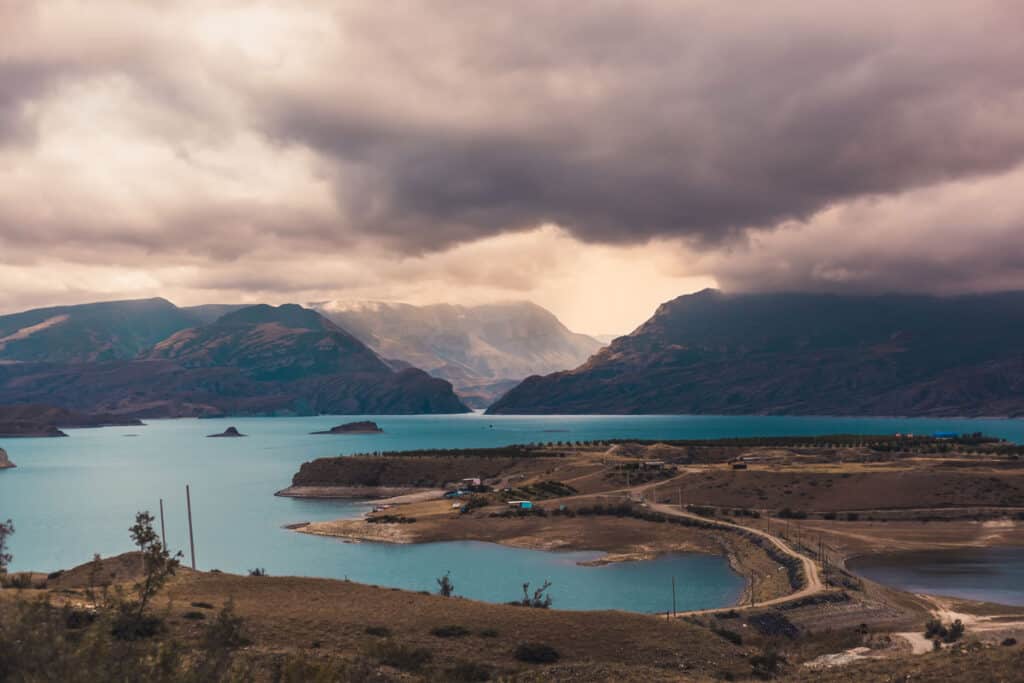
The Blue Lake is the clearest lake in the world.
©iStock.com/Andrey Danilov
New Zealand is well-known for its natural beauty, with mountainous terrains surrounding crystal clear lakes whenever you hop out of the city. But the country is also famous for having the clearest lake in the world! Blue Lake has underwater visibility up to 70 to 80 meters or 230 to 260 feet down, which is insane! Apart from being the world’s clearest lake, it’s also the clearest body of natural freshwater. The water in Blue Lake is comparable to distilled water based on laboratory measurements.
Blue Lake is studied to account for its clarity to an underground passage coming from Lake Constance, which filters almost all unnecessary particles suspended in its water. The clarity of Blue Lake is so incredibly high that its waters reveal the natural color of water, which is blue-violet.
2. Lake McKenzie, Australia
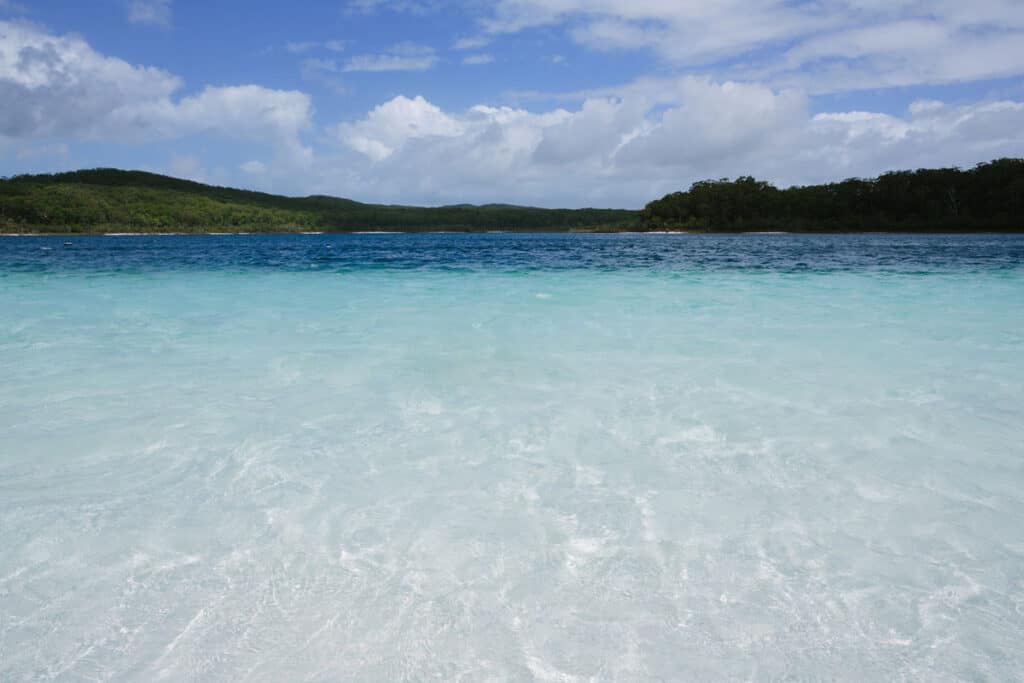
Lake McKenzie has underwater visibility reaching 50 meters.
©iStock.com/oxime
Dubbed as the “Jewel of the Fraser Island,” Lake McKenzie in Australia is indeed a jewel where you can see your reflection on. It is housed by Queensland’s Fraser Island, the largest island in the world. Lake McKenzie is a perched lake, which means it was formed as the sands cemented together with iron, aluminum, and organic matter, creating a layer above sea level. However, the conditions in this very most acidic of clear lakes makes it unsuitable for some species to settle in. The lake’s acidic nature makes it hard to harbor healthy aquatic life, hosting a fragile ecosystem. Lake McKenzie has underwater visibility that reaches 50 meters in sunny weather. Its clarity results from the impermeable layer at the lake’s bottom created by sand and organic matter. This layer functions as a natural filter, preventing rainwater from draining.
3. Torch Lake, Michigan

The third-clearest lake in the world is Torch Lake.
©AnotherViewDroneService/Shutterstock.com
Torch Lake has been known for its blue-green yet crystal clear waters. But apart from this reputation, tourists visit it for its waters that look exactly like the Caribbean Sea. It also has several sandbars, which can be a really exciting vacation site that can make you skip your next trip to the Caribbean and head to Michigan instead. The Torch Lake was once connected to Lake Michigan and was even a part of it. Yet, the sandbar formation across the mouth of the lake separated it from the Great Lake of Michigan and now holds the title as the second-largest lake in the state. Since the lake is a fjord-like bay carved by glaciers in the last ice age, its geology gives it its mesmerizing crystal-clear turquoise color – a true gem among clear lakes of the world.
4. Lake Tahoe, Nevada
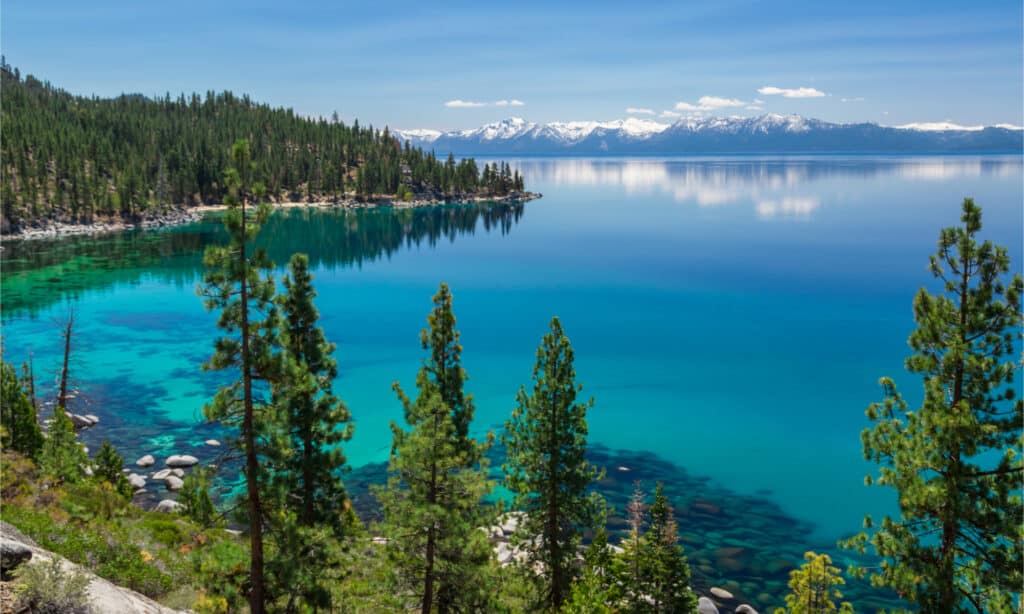
Lake Tahoe’s underwater visibility reaches 100 feet.
©topseller/Shutterstock.com
Located in the Sierra Nevada, Lake Tahoe has earned its reputation as one of the world’s most beautiful clear lakes because its underwater world can be seen through the naked eye. With its underwater visibility reaching 100 feet or 30 meters on a good day, people on boats surely would catch a glimpse of its stunning underwater scenery. Between the 1920s and 1930s, many ships were wrecked and sunk in the lake. These boat wrecks can be visibly seen through the naked eye from the lake’s surface on a clear day. Yes, that’s how clear it is! The reason behind its clarity is that 40% of rain falling onto the watershed drops directly on the lake. The remaining 60% drains through marshes which are ideal filter systems.
5. Lake Baikal, Russia
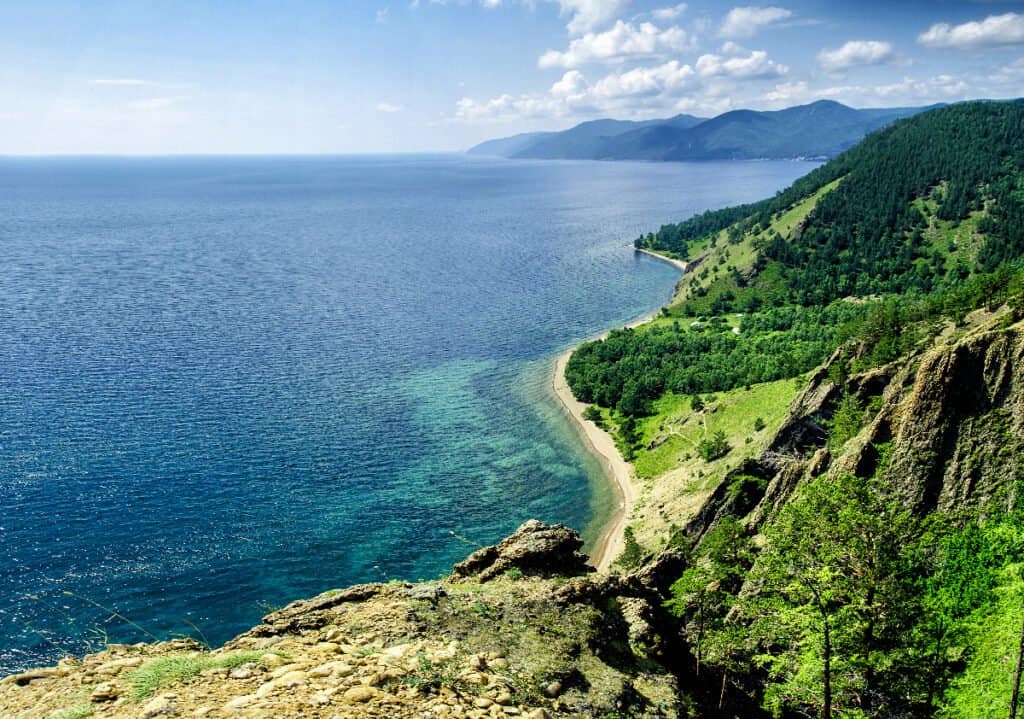
Lake Baikal is the deepest lake in the world.
©Julia Kuzenkova/Shutterstock.com
Russia’s Lake Baikal is world-famous for its vast surface area and incredibly deep depths. It is the deepest lake in the world and the largest freshwater lake by water volume. It even has its freshwater seal species that is endemic to the area. But apart from its incredible depth, Lake Baikal is also known to have one of the clearest and cleanest waters globally. Lake Baikal’s underwater visibility reaches 30 to 40 meters, so if you sail on a boat above its waters, you can see the lake’s glorious ecosystem within! This ecosystem consists of filtering plankton that consumes sediments and other minerals, consistently making it one of the most beautiful clear lakes. The bigger the plankton population is, the clearer the lake’s portion would be.
6. Crater Lake, Oregon
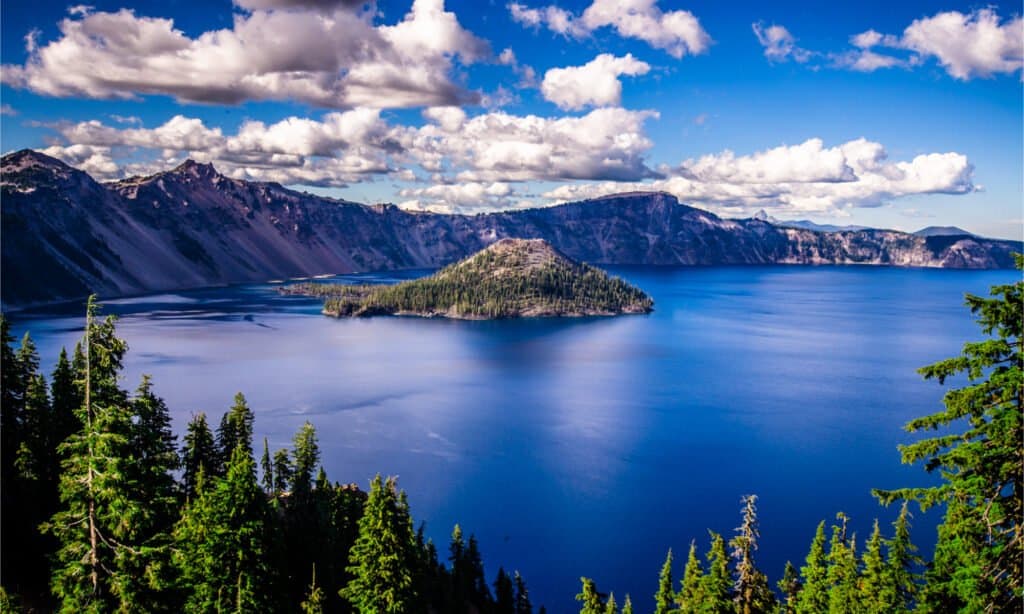
Formed 7,500 years ago, Crater Lake is the 9th deepest in the world.
©Pung/Shutterstock.com
Crater Lake is the 9th deepest lake globally, but that doesn’t mean its waters aren’t clear. Located in south-central Oregon in the United States, it is also its deepest lake. It is well-known for its magnificent blue color and is one of the main tourist spots in Crater Lake National Park. Crater Lake attributes its clarity to the snow or rain where its water comes from. The lake was formed through the collapse of Mount Mazama 7,500 years ago. Since the lake has no other entrances or waterways, no mineral deposits or debris are flowing through the lake, preserving its rich hue.
7. Lake Mashū, Japan

Located in Japan, Lake Mashū is one of the world’s clearest lakes.
©iStock.com/shikema
Lake Mashū, one of the world’s clearest lakes, is located in Japan. Locals call this lake “the Devil’s Lake,” and has become a popular tourist destination. Lake Mashū is a superb illustration of nature’s splendor. This lake is also a UNESCO World Heritage Site. The lake is free of debris carried in by rivers because it is fed primarily by rain.
8. Five-Flower Lake, China
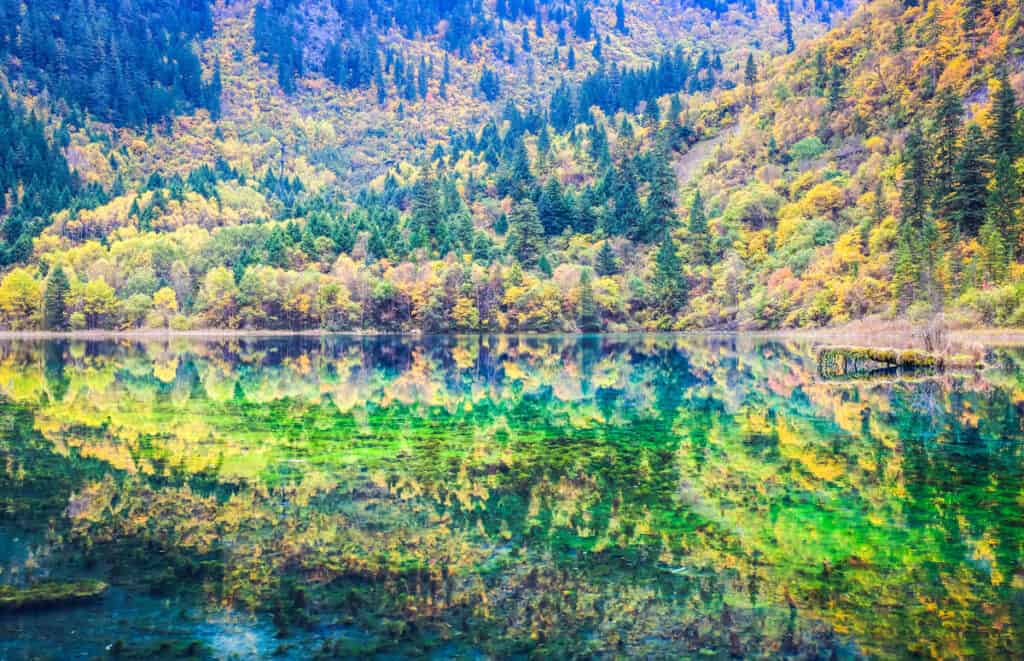
©chuyuss/Shutterstock.com
The Five-Flower Lake is a small crystal-clear lake in China’s Jiuzhaigou Nature Reserve. Because of the lake’s clarity, old tree trunks can be seen near the bottom. The colors of the Five-Flower Lake include green, yellow, and blue. The presence of hydrophytes and calcium carbonates in the lake causes its clarity. The locals call the lake “a piece of mirror that fell from a goddess’ hands.”
9. Melissani Lake, Greece
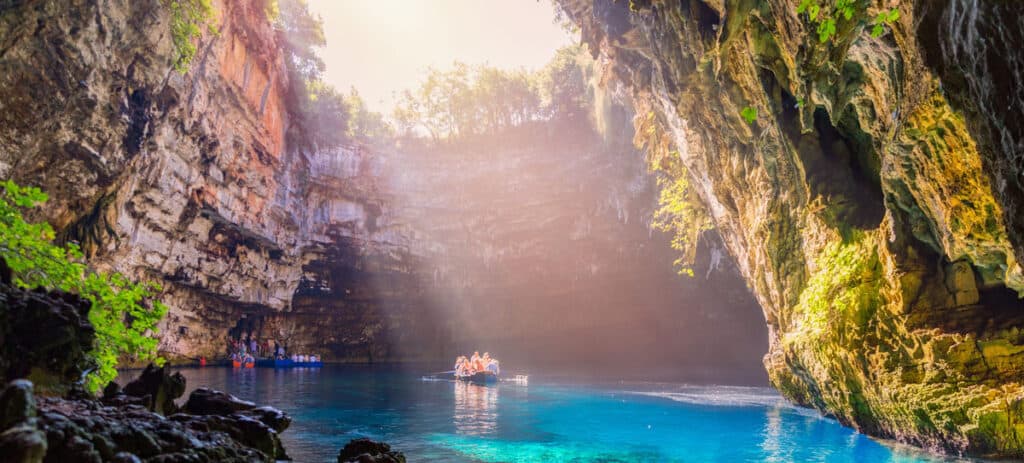
Located in Greece, Melissani lake is famed for its crystal-clear water.
©iStock.com/DaLiu
This most charming of the world’s clear lakes, which flows through a cave of the same name, is famed for its crystal-clear water. It is located in Kefalonia, Greece, and is a nymph’s den in Greek mythology. The best time to go is on a beautiful day, when the sun reflects off the sea-green water, creating a stunning effect.
10. Flathead Lake, Montana
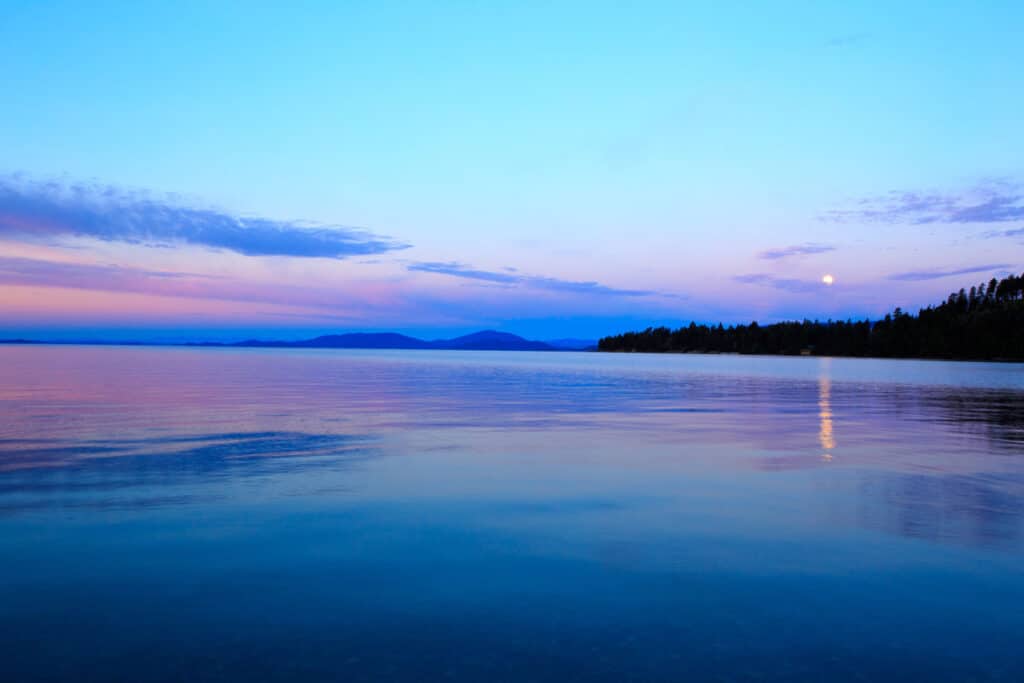
The Flathead Lake is the largest and cleanest lake in the U.S. state of Montana.
©iStock.com/highmountainphotography
Measuring by surface area, Flathead Lake is the largest and cleanest lake in the U.S. state of Montana. This lake is home to yellow perch, trout, whitefish, sturgeon, and northern pike. The neighboring tree-lined beach is ideal for fishing, swimming, sailing, waterskiing, powerboating, and other activities. The lake’s clarity is due to its little nutrients, which encourage algal growth.
11. Moraine Lake, Canada

©Invisible Witness/Shutterstock.com
Moraine Lake is a body of water in Canada exclusively fed by glaciers. It is known for its transparent blue hue that changes depending on the angle of the lake, the time of the day, or seasons of the year. Moraine Lake is at its brightest during the summer as the melted glaciers fill the lake’s basin. It exhibits a clear blue reflection as the light refracts from the lake’s rock floor deposits.
12. Lake Blausee, Switzerland

©iStock.com/SoblueWeina
Switzerland is known for its abundant nature and crystal-blue clear lakes, and one of those is Lake Blausee. The lake, fed by underground springs, is fully transparent and has a wonderful blue-green tint. About 40 feet below, sunken tree trunks and boulders may be seen. The lake is crystal-pure because it is made up of mineral-rich mountain spring water from an underground source.
13. Lake Bacalar, Mexico

Fed by a series of underground rivers, Lake Bacalar is one of the clearest lakes in the world.
©iStock.com/Iren_Key
Lake Bacalar in Mexico is a freshwater lagoon that sits inland from the sea. It is fed by a series of underground rivers and possesses a white sandy bottom that lets the lake’s clear water change from turquoise to indigo throughout the day. This is also why the lake is dubbed “lake of seven colors.”
14. Attabad Lake, Pakistan
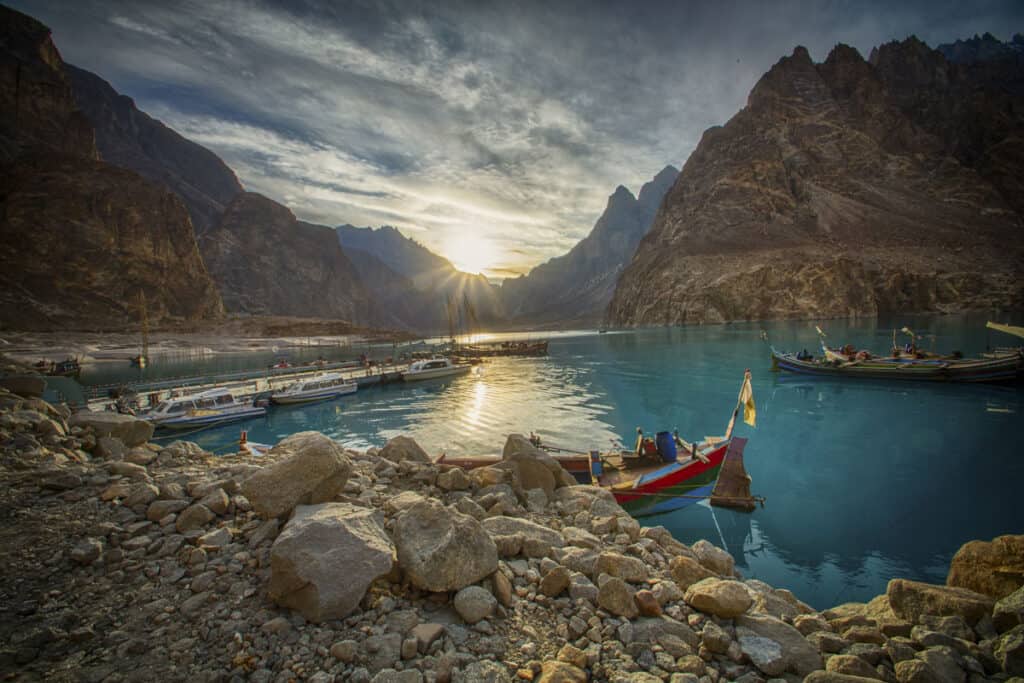
©iStock.com/Sarah Naqvi
The Attabad Lake serves as a silver lining to a tragic event. A landslide in northern Pakistan in 2010 buried the community of Attabad, resulting in the formation of a new lake. When the glaciers melt in the spring and summer, the pristine Attabad turns a stunning vivid blue color.
15. Lake Malawi, Mozambique/Tanzania
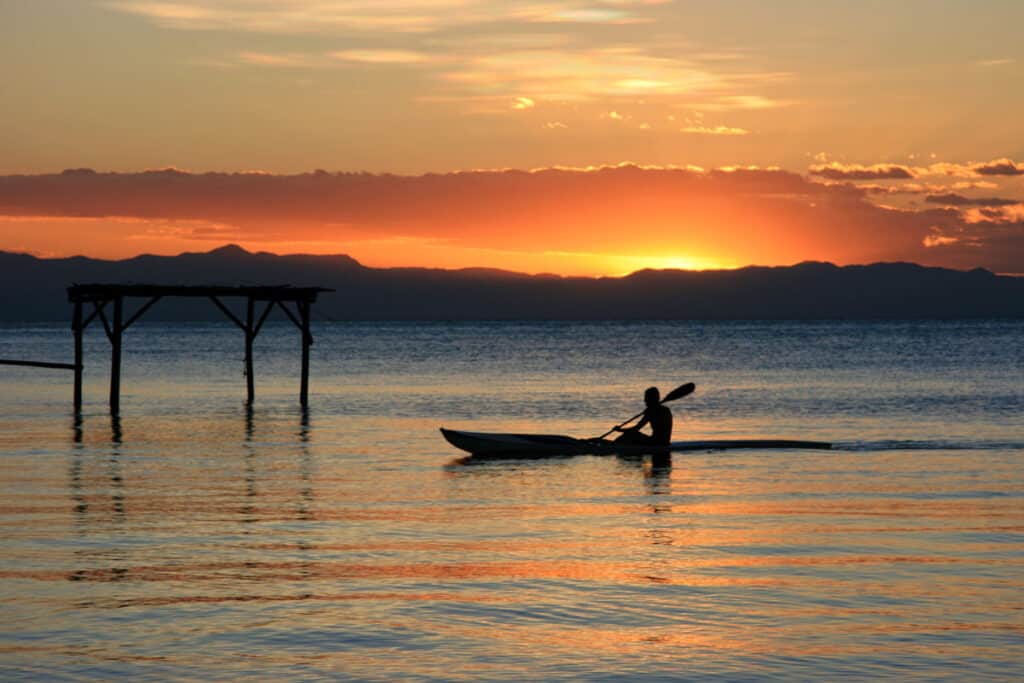
Extending across Mozambique and Tanzania, Lake Malawi’s layers do not intermix.
©iStock.com/Tristan Barrington Photography
Lake Malawi is a narrow lake extending across two countries in Africa – Mozambique and Tanzania. The lake is one of the deepest in the world, but it still displays clear waters. Lake Malawi is meromictic, which means that its layers do not intermix, making all the sediments stay at the bottom. This causes the water in the lake to remain entirely clear and transparent.
The photo featured at the top of this post is © iStock.com/heyengel
Thank you for reading! Have some feedback for us? Contact the AZ Animals editorial team.







